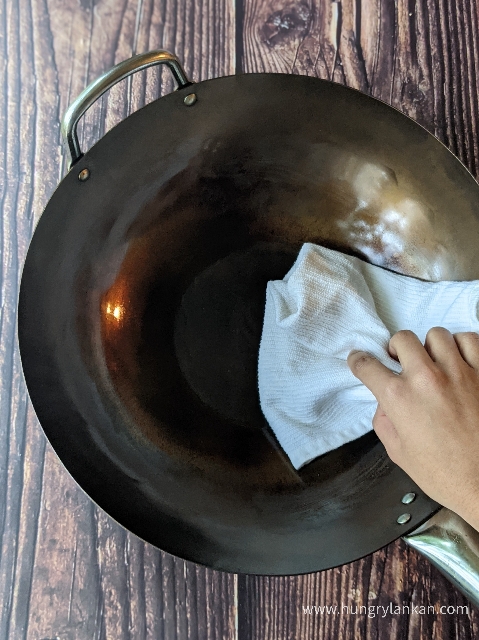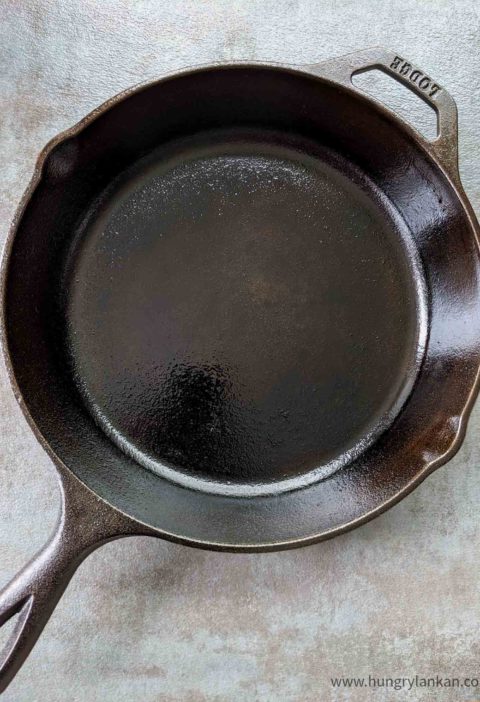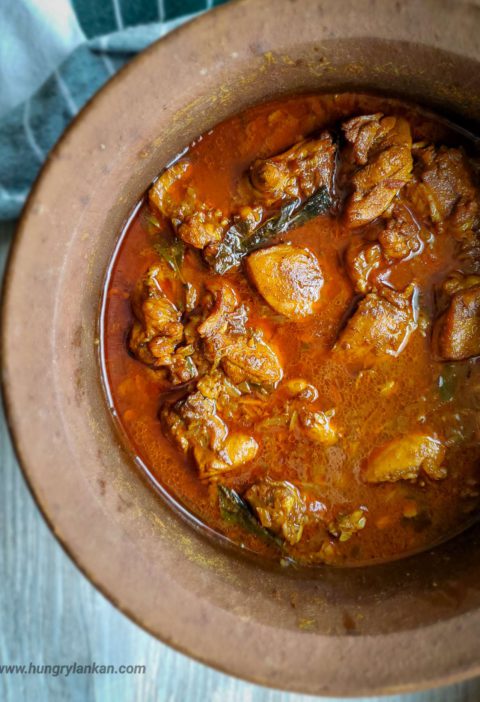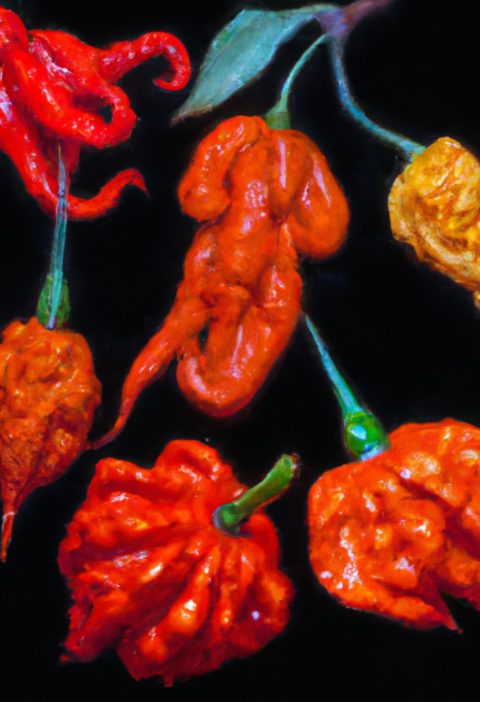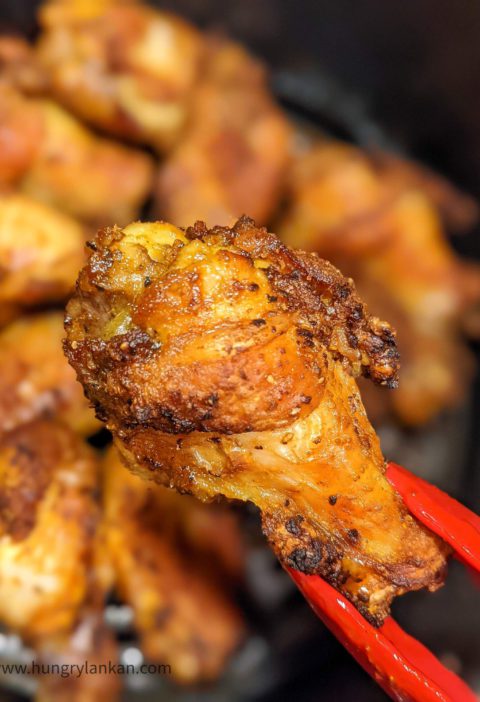I got a new carbon-steel wok and thought I would share how I seasoned my wok this time. I love wok cooking and I use it all the time. It’s a wonderful cookware I think everyone who loves Asian food should own. You can never get the same results on stir-fried food from any other cookware as you’d get from a good wok.
This article contains affiliated links from Amazon.
Buy a Carbon-steel wok
If you’re looking to buy a wok, and you’re serious about cooking Asian food, you should definitely go for a carbon steel wok (amazon link: https://amzn.to/3lw42AF). Here’s why. They are lightweight when compared to other high-heat-proof cookware. They produce amazing wok hei which makes the stir-fry dishes, fried rice so flavorful and unique. It’s pretty thin so it heats up quickly and cools down quickly. Polymerization of oil produces an amazing non-stick coating when you season it properly.
Why do I have to season it?
- Carbon steel Rust pretty quickly. So it needs some maintenance. Almost all carbon steel woks come without any seasonings. They come with a manufacturer coating on them that keeps them from rusting. They are silver in color, unlike the dark color woks you’d usually see in the restaurants. Once you washed the manufacturer coating away the wok starts to rust. You can notice that just in a few hours.
- A proper seasoning makes a wok naturally non-stick. As many of you already know, Teflon coated non-stick pans emit toxic fumes when they’re heated into high heat. You don’t have that problem with carbon steel cookware. A propaerly seasoned wok is actually performs better than a non-stick pan.
- A good seasoned wok gives a better sear to your food. Which enhances the flavor. If you cook in high enough heat, it gives a nice wok hei (breath of wok). That’s the unique smokey and charred flavor you get from Asian stir-fry dishes
Seasoning methods:
- Heating on the stove
- Stir-frying aromatics or some onion or potato skins(this is the traditional method)
- Baking in the oven
You can use either one of these methods alone. Or a combination of these methods. I use a combination of methods 1 and 3. First I bake my oven in the oven after applying a very thin coating of oil all over the wok. This would heat the whole wok rather than the bottom and make an even seasoning all over my wok. Then I
Step by Step guide to season the wok in the oven
Step 1:
Unscrew and remove the handle as it can burn in the hot oven. If you can’t remove them, wrap the handles with a damp towel before you put the wok into the oven. Keep an eye on it when baking.
Step 2:
Scrub the whole carbon-steel wok with a sponge and soap until there isn’t any manufacturer oil on it. The water should run clear. Also, heat the oven to 475F.
Step 3:
Wipeout all the water very very well using paper towels.
Step 4:
Apply avocado oil (amazon link https://amzn.to/3dhUYLr) all over the wok using a paper towel (canola oil, lard, shortening, grapeseed oil, peanut oil would also work. Don’t use butter. ghee, or coconut oil). Now, wipe out the oil from the wok using some more paper towels. The goal here is to have a very very thin coating of oil on the wok. When you touch the wok you should not feel it has oil on it. If you have too much oil applied to your wok it would smoke in the oven and also make some visible oil streaks as the excessive oil slides down on the wok.
Step 5:
Place the wok upside down in the oven and bake for 30 mins on 475F.
Step 6:
It should have a nice patina from oil baking onto it. And the color of the wok changes from silver to either of these colors: brown, pink, purple, green, yellow, blue. It would get more brown as you bake it and the oil polymerizes.
Step 7:
Let it cool down. This is how it looks after baking it once.
Step 8:
Repeat from step 4 to step 7 two to three times more. So in total, you’re going to bake your wok 3 – 4 times.
Note: I recommend adding another layer of seasoning to the bottom of the wok using the stove-to method below. If you’re only going to use the oven method, then after seasoning your wok in the oven, stir-fry some roughly cut onions in your wok with some oil until onions get charred a little bit.
Adding more seasoning to the bottom of the wok – on the stove
This step is optional for those who already completed the method above. After baking your wok in the oven three to four times you’d see that it has seasoned all the way around. It’s brown already. It would continue to season as you cook on it.
But I like to do this extra step to make sure that the bottom of my wok is well seasoned. It makes the bottom of the wok darker in color and non-stick. It would be easier if you have a gas stove. But you can also do this on electric stoves too.
Here’s how you do it:
Make sure your kitchen is very well ventilated. This step is going to produce a lot of smoke
- Apply avocado oil very well inside the wok using a paper towel. (canola oil, lard, shortening, grapeseed oil, peanut oil would also work. Don’t use butter. ghee or coconut oil)
2. Then wipe away excess oil using another paper towel.
3. Turn on the gas stove (electric stoves would also work fine) and set the flame to medium-high.
4. Put the wok on the stove and let heat. The wok would start to smoke and also get darker as the oil burns into the metal.
5. Now carefully with tongs wipe the bottom again with an oiled paper towel. It would make a lot of smoke. But would add another layer of seasoning. Let it heat until the oil is burnt. You can add a few more layers of seasoning this way if you want. If your paper towel burns immediately when you wipe the wok that means your wok is too hot it would burn the seasoning too. Reduce the heat and do it again.
6. Do the same to the sides too.
Note: You can use this stove-top method alone to season your wok. Just make sure you heat not just the bottom but all over the wok by holding it directly over the fire and turning time to time as you do so. Scrub and wash the wok to remove the manufacturer’s coating. Wipe it clean and follow the above stove-top seasoning steps.

